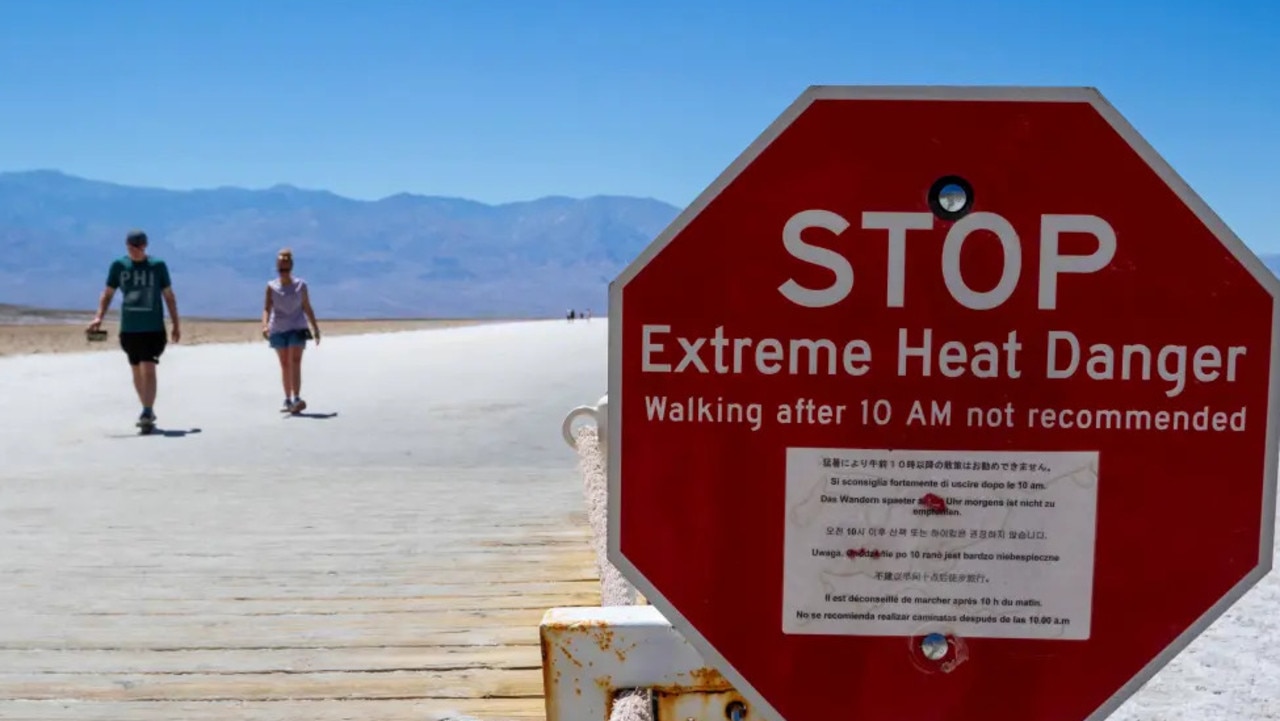Visitors rush to Death Valley in the US in hope of experiencing the hottest day on Earth
Tourists have been flocking to Death Valley in the United States this week in the hope of experiencing the hottest day in history

READING LEVEL: GREEN
Tourists have been flocking* to Death Valley in the United States this week in the hope of experiencing the hottest day on Earth.
Death Valley is a national park in the state of California and is known for being the hottest and driest place on our planet. The flat, rocky desert already holds the record for the hottest day in history – 56.6 degrees Celsius in July 1913. That’s super hot!

Some scientists now doubt the accuracy of that reading, one of many records from the early 1900s that have been questioned by the World Meteorological* Organisation, which is recognised as the keeper of world record temperatures.
Randy Ceverny who works there says temperatures at or above 54.44 degrees Celsius have only been recorded a handful of times, mostly in Death Valley where signs warn hikers* not to walk after 10am.
Earlier this week, German tourist Daniel Jusehus snapped a photo of the famous thermometer at the Death Valley visitor centre showing 48 degrees Celsius after challenging himself to a run in the sweltering* heat. He said exercising would be much tougher in the record temperatures.
“I was really noticing, you know, I didn’t feel so hot, but my body was working really hard to cool myself,” he said.

At the weekend, meteorologists were tracking high clouds in the Death Valley area that could keep temperatures below the record mark.
“The all-time record seems fairly safe today (Sunday),” said meteorologist Matt Woods from the National Weather Service.
The desert’s scorching* temperatures come amid a stretch of hot weather in the northern hemisphere* that has put about one-third of Americans under heat warnings and seen sizzling* temperatures across European countries including Italy, Spain and Greece.

June 2023 was the hottest June on record, according to several weather agencies. Scientists say there is a good chance this year will go down as the hottest year on record, with measurements going back to the middle of the 1800s.

The highest temperature ever recorded in Australia is 50.7C, which was recorded on January 2, 1960 at Oodnadatta, South Australia, and January 13, 2022 at Onslow, Western Australia.
A combination of long-term human-caused climate change from the burning of coal, oil and natural gas is believed to be making the world hotter by the decade, with ups and downs year by year.
POLL
GLOSSARY
- flocking: moving together in a crowd
- meteorological: relating to the weather
- hikers: people who walk long distances
- sweltering: uncomfortably hot
- scorching: very hot
- northern hemisphere: top half of the earth that is north of the equator
- sizzling: extremely hot
EXTRA READING
100 lightning strikes in one amazing photo
Why some people never feel the cold
QUICK QUIZ
- Where is Death Valley?
- What is the highest temperature ever recorded there?
- Who keeps records of the hottest temperatures?
- Which natural phenomenon might have kept Death Valley temperatures from breaking the record?
- Which two towns have recorded the highest temperature in Australia and what was it?
LISTEN TO THIS STORY
CLASSROOM ACTIVITIES
1. World’s hottest temperatures
Using all the temperatures from the places listed in the article, graph the temperatures on a bar graph. List the place name beside it.
After completing your graph, look at the temperatures, dates and locations of the high temperatures. Write down three to five facts that you can decipher from the graph.
—
—
—
—
—
Time: allow 25 minutes to complete this activity
Curriculum Links: Mathematics, Critical and Creative Thinking
2. Extension
Why do you think some of the meteorological records from the early 1900s are being questioned by current day scientists?
Why is it important to keep records such as weather temperatures, rainfall etc?
What do scientists believe is causing the warmer temperatures?
Time: allow 15 minutes to complete this activity
Curriculum Links: English, Science, Critical and Creative Thinking
VCOP ACTIVITY
1. Weather warning
Why do you think there is a sign at Death Valley to say no hiking after 10am?
Write a letter to hikers explaining why there is a warning sign and why they should adhere to it.
Try to include examples with your explanations to really get the message across.
Re-read your letter aloud to check for fluency and expression. Can you use any of your VCOP skills to up-level the writing to make it even better?
Share it with a partner so discuss what works well.

